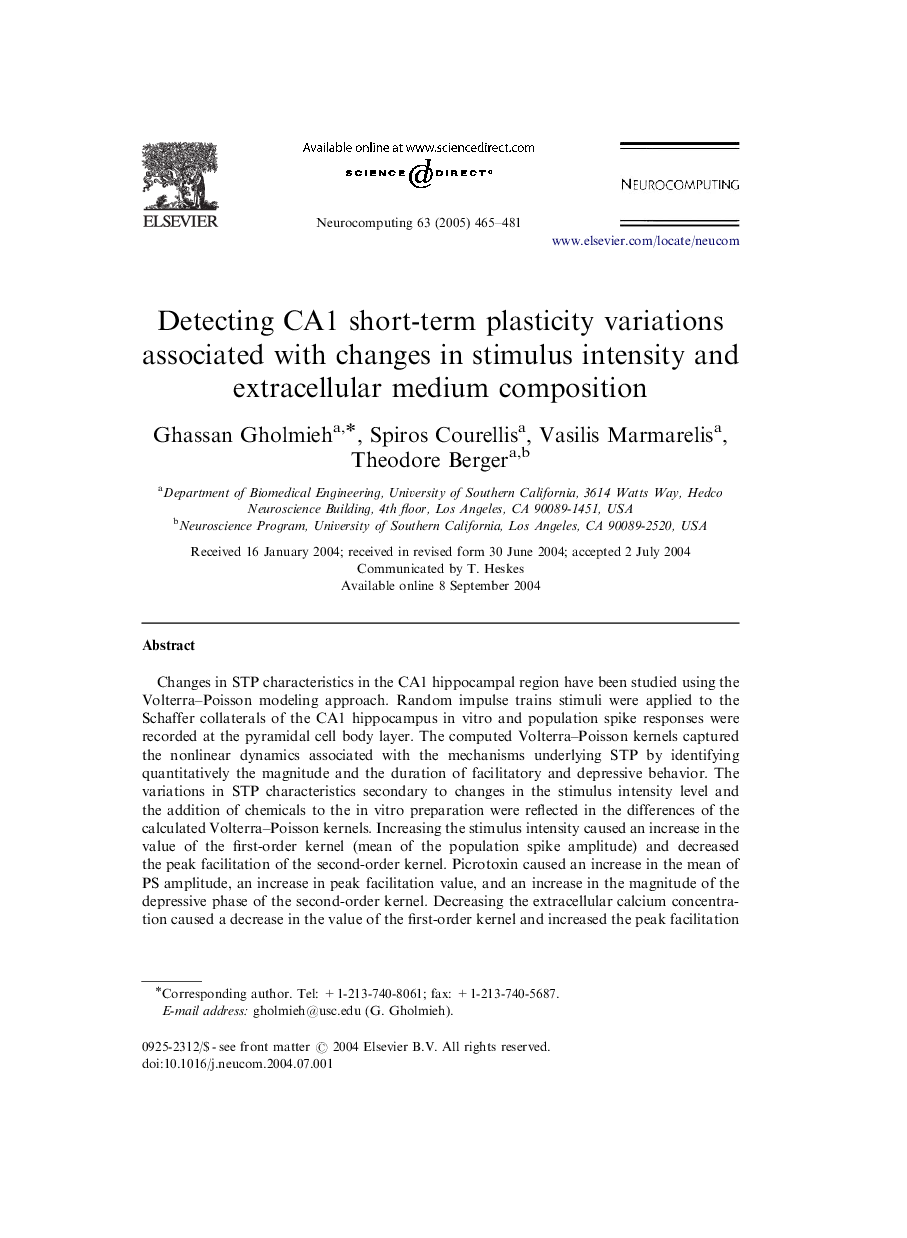| Article ID | Journal | Published Year | Pages | File Type |
|---|---|---|---|---|
| 9653618 | Neurocomputing | 2005 | 17 Pages |
Abstract
Changes in STP characteristics in the CA1 hippocampal region have been studied using the Volterra-Poisson modeling approach. Random impulse trains stimuli were applied to the Schaffer collaterals of the CA1 hippocampus in vitro and population spike responses were recorded at the pyramidal cell body layer. The computed Volterra-Poisson kernels captured the nonlinear dynamics associated with the mechanisms underlying STP by identifying quantitatively the magnitude and the duration of facilitatory and depressive behavior. The variations in STP characteristics secondary to changes in the stimulus intensity level and the addition of chemicals to the in vitro preparation were reflected in the differences of the calculated Volterra-Poisson kernels. Increasing the stimulus intensity caused an increase in the value of the first-order kernel (mean of the population spike amplitude) and decreased the peak facilitation of the second-order kernel. Picrotoxin caused an increase in the mean of PS amplitude, an increase in peak facilitation value, and an increase in the magnitude of the depressive phase of the second-order kernel. Decreasing the extracellular calcium concentration caused a decrease in the value of the first-order kernel and increased the peak facilitation value of the second-order kernel. Finally, the ability of the Volterra-Poisson modeling approach to track STP changes was confirmed through the low normalized mean square error associated with the prediction of in-sample and out-of-sample responses.
Related Topics
Physical Sciences and Engineering
Computer Science
Artificial Intelligence
Authors
Ghassan Gholmieh, Spiros Courellis, Vasilis Marmarelis, Theodore Berger,
